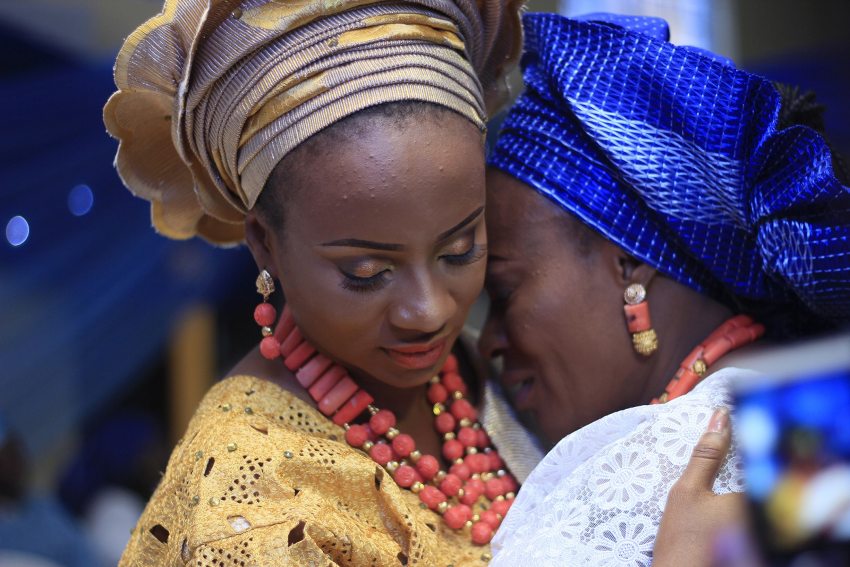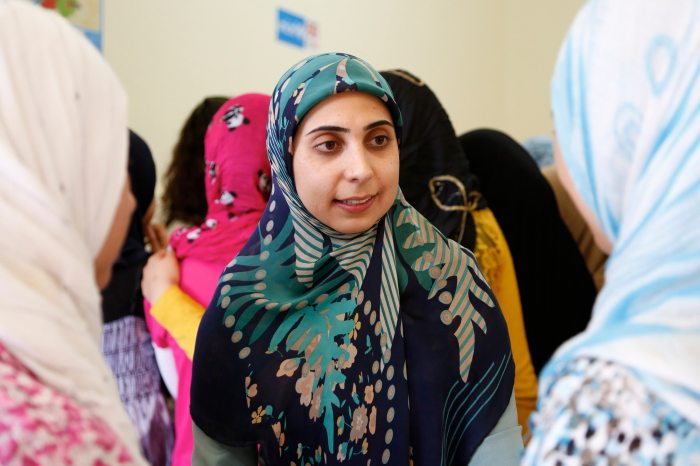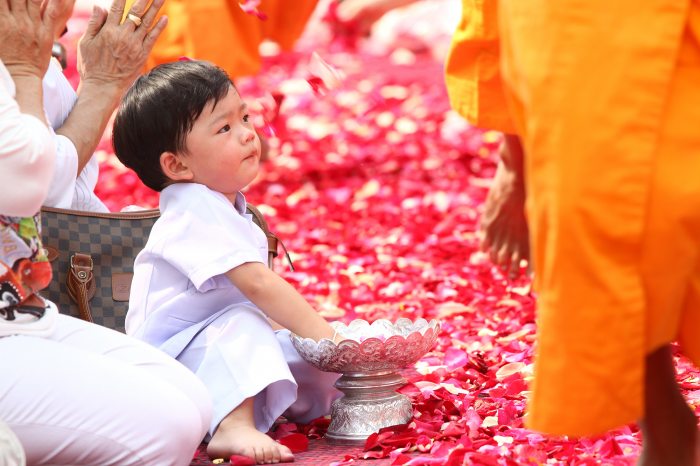“I’m a little girl, not a wife” - Child marriage, which is not a game
A child marriage is concluded every 23 minutes. This means that, while you watch the evening news, somewhere in the world, a little girl is forced to marry a man who is usually much older than her. The tragedy of child brides does not make the news, most people don’t even know about them, and they have to deal with the trauma alone.

Many will have dreamt in childhood about what it will be like when one day the love of your life pulls out a ring and asks to begin a lifelong journey together. “Open face, open heart, open word, hand in hand and eye to eye, that is how we see our love,” as Melinda beautifully (and in a very enlightened way!) puts it in Bánk Bán by József Katona.
The point is, two equal parties who choose each other of their own free will. That is an unimaginable luxury in some parts of the world, and a false hope for millions of little girls.
Forcing (young) girls under the age of 18 into marriage, not only interrupts their childhood, but an early pregnancy often exposes them to serious health risks and isolates them from the rest of society and, not least, their peers. At the same time, their dreams of learning and acquiring a profession are almost always dissipated.
Such young girls often become victims of domestic violence and have no means to represent their own interests or to defend themselves. In addition, child brides often live under the same roof as the husband’s extended family, which can be another source of violent abuse.
The younger the better
Majeda Begum is a thirteen-year-old Bangladeshi girl who was forced by her parents to marry a twenty-five-year-old man. “I grew up in my uncle’s house because my parents were too poor to raise me. When he died, they forced me to get married. I dropped out of school in the second form”, said the young girl, who also gave birth to a little boy at the age of thirteen, telling a reporter her tragic story. The doctor did not understand how she could get pregnant as her body was very underdeveloped. The gynaecologist suggested a caesarean section, but Majeda’s husband did not allow the operation, the baby had to struggle through the child’s body to be born. “I feel like a servant at home, my husband also beat me when I was pregnant. Even though I hate being with him, when he wants to have sex, I just have to obey. He often grabs and attacks me in my dreams ”, the little girl said, holding back her tears.
The documentary shows that Majeda's case is far from unique, as most girls in Bengal villages have been married this way for generations (the reporter's grandmother was only ten years old when she was forced to marry).
Men also choose a child bride for themselves because they are innocent, obedient, and much easier to force than adult women.
Child marriage became illegal in Bangladesh in the 1980s, in Asia, most such marriages are still concluded there. That is possible because, in that country, many girls’ birth certificates are forged, making it impossible to prove their real ages.
A Lebanese woman educates two Syrian refugee girls about violence against women and the dangers of child marriage - Picture: Wikipedia
Underlying causes of child marriage
As in our previous article on the genital mutilation of young girls, we are now interested in the maternal instinct in the issue of child marriage. In order to answer that question properly, first the cultural differences must be taken into account. While in Europe, the UN Convention on the Rights of the Child, adopted in December 1989, is the most widely accepted international human rights legal instrument to date, defining thinking about children's rights and the formal end of childhood (18 years), adulthood is understood differently in other parts of the world.
In Afghanistan, a 12-year-old boy may already be a family-supporting man. In Japan, the age of sexual consent is 13 years. In some African countries, the girl is an adult from her first menstruation.
The underlying social causes found in different parts of the world most often stem from the social situation of the family and the norms of the given culture. Most of the little girls offered for marriage live in deep poverty where, in the absence of social safety nets for a safer life, parents often interpret forced marriage as a more secure future. Marriage, however, is also a manifestation of a patriarchal will to govern the lives and futures of women and little girls, stemming in part from the same roots as genital mutilation. The number of child marriages is further increased by war and conflict, when parents may also decide to marry their minority age daughter for security and economic reasons. War is known to increase the number of acts of violence against women, which is why, in some conflict zones, forced marriage is seen as a security measure to protect underage girls.
Of course, the reality is much darker; according to the Swedish NGO Kvinna till kvinna (‘Woman to Woman’), married girls under the age of 15 are 50 percent more likely to be victims of violence and sexual violence. “If a girl doesn’t get married early, the community will gossip about her,” say village elders who believe that child marriage really does serve the girls’ safety. The reference to safety can also be seen in refugee camps, for example. The number of child marriages in the Jordanian refugee camp, home to hundreds of thousands of Syrian refugees, has skyrocketed in recent years. According to UNICEF data, the number of marriages in which the bride was a minor, increased from 11 percent to 25 percent between 2011 and 2013. In addition to safety, many also argue that a minor daughter-in-law can mean a ticket to the West for a man’s family if the girl manages (apparently with the help of human traffickers) to apply for asylum in a European country.
Early and frequent pregnancies disproportionately affect unprepared child bodies, so it is no coincidence that complications and infections related to pregnancy and childbirth pose the greatest, fatal, risks to girls between the ages of 15 and 19 (World Health Organization survey 2017).
That is compounded by the fact that the children of mothers under the age of 20 have a 50 percent higher risk of premature infant death.
European outlook
Child marriage can be seen as one of the negative consequences of illegal immigration in Europe. It is important to emphasize that this has not just appeared on our continent in recent years, but has been a challenge that has been with us for decades, imported through migration.
One of the countries concerned is Sweden, host to a large Muslim community, where the current legislation, although prohibiting marriages in the country where one party is a minor, recognizes marriages abroad despite the minority of one of the parties. In 2016 alone, 132 minor asylum seekers arrived in Sweden who declared that they were married, though that number is presumably much higher. Most of those arrived from Syria, Afghanistan and Iraq.
Germany, Denmark and the Netherlands face similar challenges, although, due to the growing number of asylum seekers since 2015, the Dutch have managed to tighten up at least the relevant legal framework in such a way that a minor wife cannot live with her husband at the reception centre.
The situation in Hungary
In Hungary, the legislation allows marriage from the age of 16 with the permission of the competent administrative authority, however, ‘child marriage’ is fortunately not a widespread phenomenon in Hungary. According to Central Statistical Office (CSO) data, in 2016, 388 girls married before the age of 18. The data show that there is sometimes a fairly wide generation gap between the parties, which raises suspicions that teenage girls may have been forced to marry middle-aged men. In 2016, the oldest husband was 61 years old, in 2015, 51 years old and in 2014, 60 years old, though going as far back as 2009, there was no year in which a husband over 50 years of age did not marry a 16-17 year old girl. According to experts, marriage is not in the interest of the child even if there are other reasons in the background than violence or coercion. They emphasize that every woman, regardless of culture, has the right to study and determine her future.
What can we do?
If you notice such problems in your direct or indirect environment, you should notify the social authorities immediately. You may wish to visit the ’Girls not Brides’ website for useful information on fighting child marriage.
Finally, and this cannot be stressed enough, we should be grateful for our privileged position, where we, like Melinda, who was able to marry Bánk as an equal partner, out of love and free will, may choose of our own will, and according to the dictates of our heart, the person with whom we wish to live our lives.
|
According to UNICEF, the UN body dealing with children’s rights, 12 million underage girls are offered for marriage each year worldwide. If that does not change, the organization estimates that, by 2030, another 150 million little girls will have been forced into marriage. The number of child marriages is the highest in sub-Saharan Africa, which has a population of 440 million and where four out of 10 young women are currently married before the age of 18. In second place is South Asia, where that rate is three out of 10. The phenomenon also exists in other parts of the world, although to a lesser extent: In Latin America and the Caribbean, 25 percent, in the Middle East and North Africa, 17 percent, and in Eastern Europe and Central Asia, 11 percent of marriages are made during childhood. Minor boys are also affected, though there is little data on that, and their numbers are probably far below those for girls outlined above. According to the available data, for every five little girls sold into marriage, only one underage boy is forced to marry. Although recently, international efforts have resulted in a slightly declining trend, that is not the case in all affected areas. While the number of child marriages is declining in South Asia, that is not the case in sub-Saharan Africa, where one in three little girls is forced to marry prematurely today, compared to one in seven girls in the past. Although, the high degree of latency that accompanies the above phenomenon raises doubts about those numbers. |








